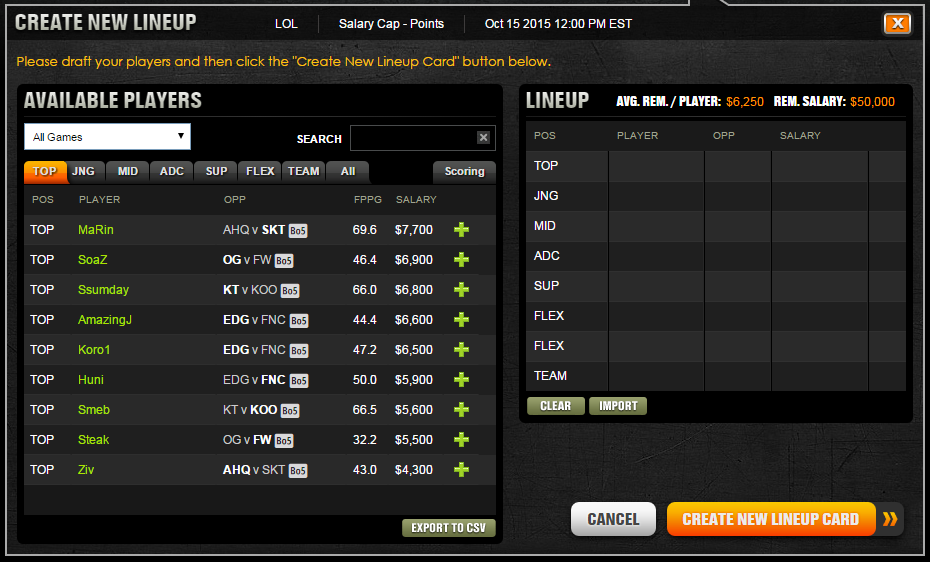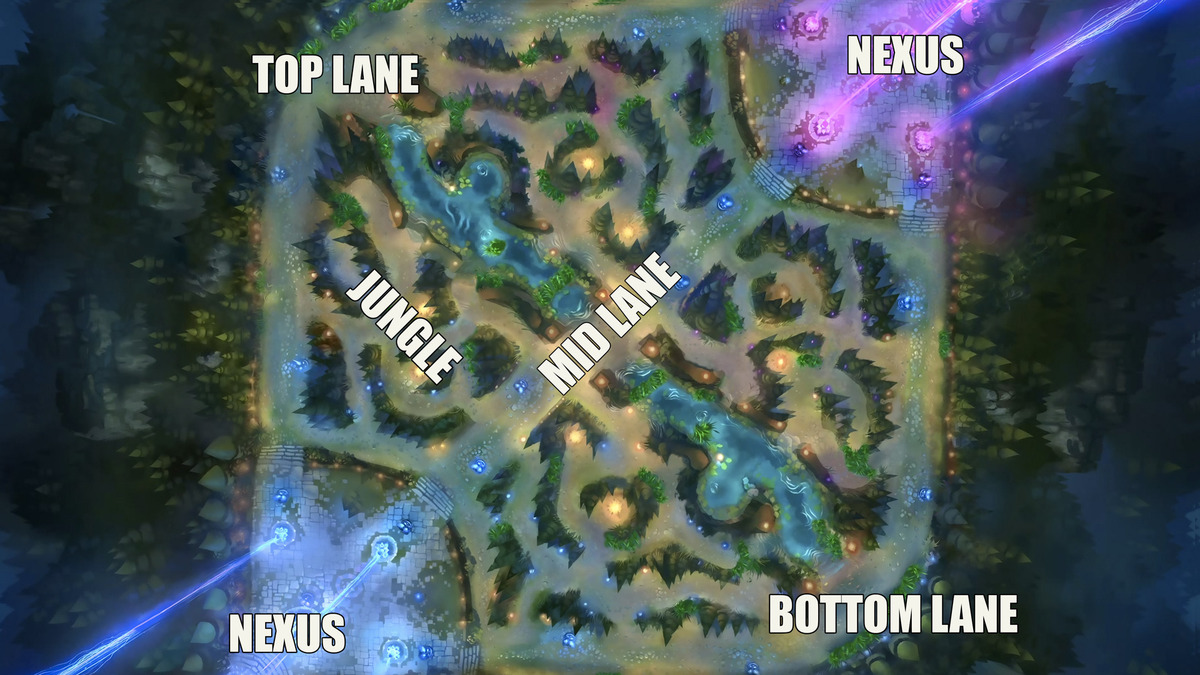Introduction and Basic Gameplay
Welcome! I’m assuming you’re here to learn all about eSports and League of Legends on DraftKings because, well, you had to purchase this course to get here. I certainly don’t want to waste your time, so let’s talk about just a few quick things and then we’ll get on to the course.
First, eSports on DraftKings and FanDuel are very new – so new, in fact, that there’s very little, if any, strategy articles or data on it. That’s both a good thing and a bad thing – it’s good because it means that if you’re willing to put in the time and energy (I assume you are because, again, you’re here) then you can really gain an edge, but also bad because there’s just not a ton of data we can present to you. We can interpret the rules and scoring (we’ll get there), but there will be a lot to learn by everyone, including us, as we play more often.
Also, the data is just hard to come by because it’s very tightly regulated. If you’ve ever watched pros play League on YouTube or at whatever tournament, you know that occasionally in the broadcasts, they’ll post cool stats like, “Team X is 14-1 when they’ve killed at least two dragons,” or whatever it may be. Unfortunately, there isn’t a place to look up this information right now. There will come a time that I think it’ll be available – even if it’s just some user wanting an edge so badly that they’re willing to do a ton of scraping somewhere – but we aren’t there yet.
Finally, my name (Bryan) is on this course but the expert with all the knowledge is Sam Cady (I’m linking his Twitter so follow him!). I’m pretty much just a guy who can edit and has the time to write sentences, but Sam is the expert in all things League of Legends. I definitely want to give him the credit for this course, as well as tell you to direct any specific questions to him. He’s super smart with this stuff.
Ok, now let’s get to the nitty gritty and talk about the positions.
The Positions
First, let’s look at the DraftKings lineup page to see the positional eligibilities.

Now, let’s look at the League of Legends map so you can follow along if you’ve never played before.

Ok, now the specific positions…
Top: He/she plays in the top lane during the early and mid part of the game. The types of champions that go here are very versatile. They can be a tank (little damage output but take forever to kill), an off-tank (more damage and less tankiness), glass cannon/carry (all damage), or more of support (decent damage but also big on buffing/protecting teammates).
Jungle: He/she plays in the jungle for the early and mid part of the game. This role might have the most versatility since they don’t have a set lane/area to be in during the game. Their role is to “gank” (sneak up on an enemy player and attack him in a 2v1 or a 3v2 setting) a lane to help get kills for himself or for his teammates that are in lane. A good jungler can help turn a lane from losing to winning with one good gank. The types of champions that can get played here are tanks, off-tanks, and glass cannon/carry.
Mid: He/she plays in the middle lane on the map during the early and mid part of the game. The types of champions that go here are high damage output typically. It can come in attack damage (physical) or AP damage (“magic”). There is still a chance they go more of safe/support champ and become more of setup champion rather than all damage, but it’s safe to say that your mid laner will have a decent amount of damage.
ADC (Attack Damage Carry): He/she plays in the bot lane on the map during the early and mid part of the game. These champions are typically trying to build as much damage and attack speed so that when the game goes long they are putting out tons of damage. These champions might get one defensive item but for the most part are always building damage. Because of this they are very fragile and are the weakest during the early game, so typically they are in lane with a support champion.
Support: He/she plays in the bot lane with the ADC during the early and mid part of the game, but also can “roam” around the map a decent amount during this time also. These champions are all about setting up and protecting their teammates. They are typically not looking to kill a champion, only getting assists.
The Objective
League of Legend contests are unique to other DFS contests in that there is no time limit. Everything else has some sort of time element – basketball and football have clocks, baseball has innings, NASCAR has laps, etc… However, in LoL contests, it can go theoretically forever. This is an important strategy thing to remember, but for the case of just talking about the objective of the game, let’s break it down into three main “times” of the game.
Early game: Champions are just trying to “farm” or kill creeps in their lane while also attacking the enemy players in lane. Depending on team strategy, kills can happen during this time but not always. Dragon can get taken during this time as well. Each dragon gives your team a “buff,” like more damage or more movement speed. Each buff stacks so getting dragons can be really helpful in winning and are a big part of strategy for most teams.
Mid game: Players are in lane but they will all start roaming around the map looking for kills, destroying towers, getting buffs, or warding. Team fights can occur during this time (5v5) but not always depending on team strategy. The baron comes into play now (a really nice buff for your team and your creeps).
Late game: Players are roaming mostly as a team trying to destroy towers, farming creeps to finish their items, getting dragons, or looking to “pick” someone off so they can try to take baron easily. Team fights will be happening a lot during this time until a team finally destroys the opposing team’s nexus and the game ends.
Tournaments
Tournaments can happen in a couple different ways. They can start with round robin group stages and then move on to a bracket stage (just like the Soccer World Cup). During the round robin, teams will most likely want to hide strategies so that when they make it to the bracket stage, it doesn’t allow their opponents to prepare for them. This is an important strategy point, because it means people might tend to just play standard or safe strategy if they believe that the talent disparity is enough to overcome the opposition rather than a unique strategy.
The bracket stage is where the ability to adapt quickly comes into play because it becomes a best of 3 or 5 series. There are a ton of champions in this game which means the amount of strategies a team could use is massive. Most other tournaments just start initially in bracket stage so they are beginning with a 3 or 5 game series.
Okay, I know that was a ton of information in the first lesson, but stick with me. Again, there aren’t many articles or courses about LoL or eSports yet, so I wanted to make sure we covered all of our bases. Anyway, on to Lesson Two.